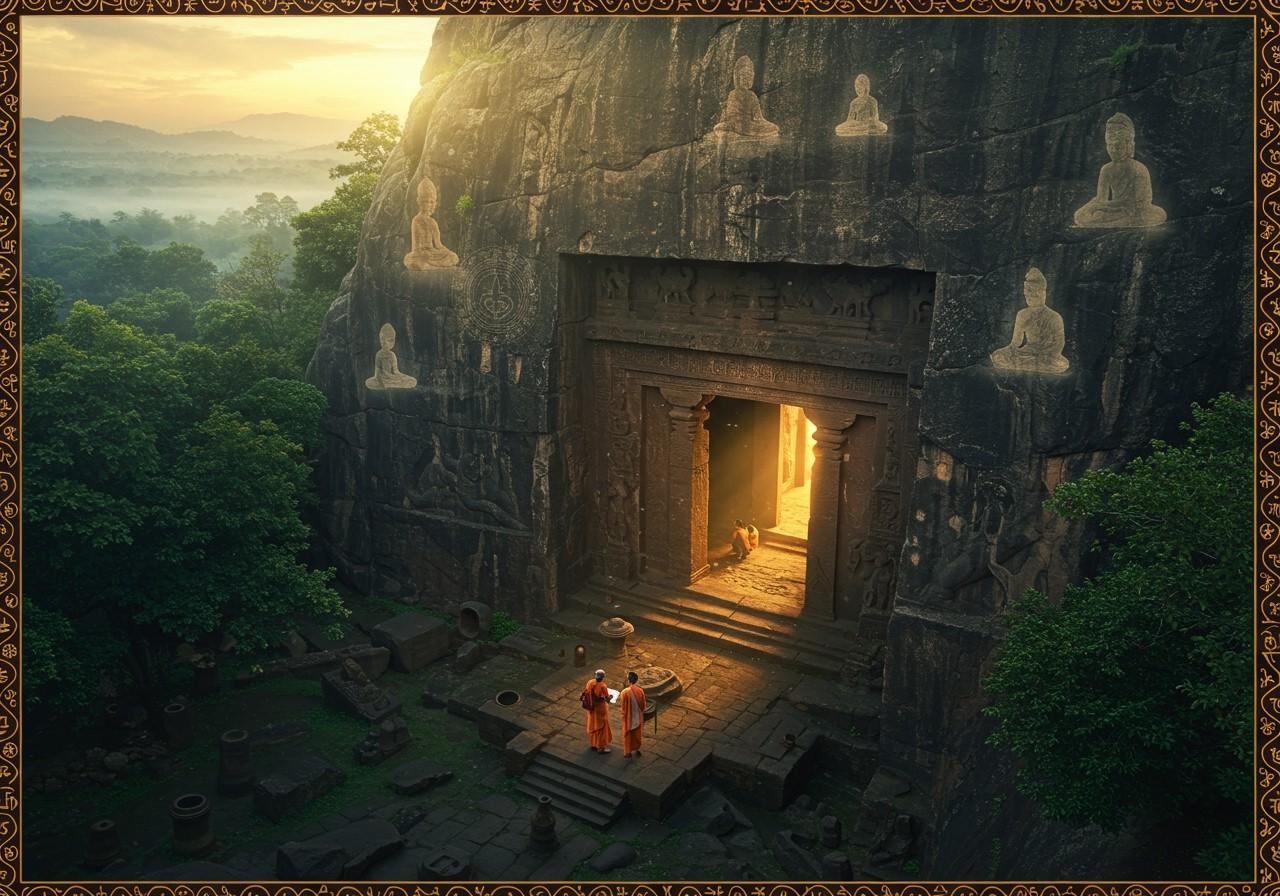
Embark on a captivating journey to the ancient Barabar Caves, nestled in the Jehanabad district of Bihar, India. Dating back to the Maurya Empire (322-185 BCE), these caves stand as a testament to India’s rich history and architectural ingenuity. As the oldest surviving rock-cut caves in India, they offer a unique glimpse into the religious and cultural practices of a bygone era. This exploration delves into the historical significance, intricate construction, and enduring legacy of these remarkable caves.
A Passage Through Time: History of the Barabar Caves
Commissioned during the reign of Emperor Ashoka and his successors, the Barabar Caves initially served as monastic dwellings for the Ajivika sect, an ascetic group predating Buddhism and Jainism. The caves later provided sanctuary to Buddhist and Jain monks as well, reflecting the era’s religious diversity. Inscriptions within the caves, including those by Ashoka and his grandson Dasharatha Maurya, offer valuable insights into the socio-religious landscape of the Maurya period.
Strategically positioned along ancient trade routes, the caves played a role in disseminating religious and cultural ideas. These routes facilitated the movement of monks and scholars, fostering an exchange of knowledge and beliefs, and solidifying the Barabar Caves’ place in history.
Architectural Marvel: Construction of the Barabar Caves
The Barabar Caves showcase exceptional craftsmanship and engineering. Carved from solid granite, the caves exhibit precise rock-cutting techniques. The interiors boast a remarkable mirror-like polish, known as the “Mauryan polish,” a testament to the skill of the artisans. The barrel-vaulted ceilings, a distinctive feature, enhance the acoustic properties within the caves.
Caves like Karan Chaupar, Lomas Rishi, Sudama, and Visvakarma each possess unique architectural layouts. Inscriptions and carvings adorn the entrances and interiors, showcasing the artistic sensibilities of the time. The construction of these caves presented significant challenges, given the hardness of the granite and the limited tools available during the Maurya period.
A Spiritual Haven: Significance and Usage of the Barabar Caves
Serving primarily as monastic retreats, the Barabar Caves offered a serene environment for meditation and spiritual practices. The tranquil atmosphere provided respite from the outside world, fostering contemplation and introspection. The caves stand as a testament to Emperor Ashoka’s patronage of various religious sects and his promotion of religious tolerance.
The Barabar Caves’ architectural style influenced subsequent rock-cut cave complexes in India, notably Ajanta and Ellora. Today, these caves draw historians, archaeologists, and travelers from around the globe, captivated by their historical and architectural significance. Ongoing preservation efforts aim to protect these ancient wonders for future generations.
Poojn.in: Connecting to Sacred Rituals
The Barabar Caves resonate with spiritual significance, particularly for Buddhist and Hindu traditions. Poojn.in offers a curated selection of items that connect to the sacred rituals reminiscent of those performed in these ancient caves:
-
Pure Sindoor: Our traditional sindoor, crafted from natural ingredients, evokes the red pigments used in ancient cave paintings and religious markings. We offer various types of sindoor, ideal for daily worship and special ceremonies. Explore our Sindoor collection.
-
Meditation Supplies: Reflecting the caves’ function as meditation chambers, we provide meditation mats, bells, and incense sticks to create a serene atmosphere for your personal spiritual practice. Discover our Meditation Supplies.
-
Puja Items: Just as offerings were made within the caves, we offer a wide array of puja thalis and essential items for traditional Hindu worship rituals. Browse our Puja Items.
Visit Poojn.in to discover our comprehensive collection of authentic puja items, carefully curated to connect you with these ancient spiritual practices. We are committed to providing high-quality, authentic products, delivered conveniently across India.
Note: Product availability is subject to stock. Prices and availability may vary.
A Timeless Legacy
The Barabar Caves remain a powerful symbol of India’s rich heritage. A visit to these ancient sanctuaries offers a profound connection to the architectural brilliance and spiritual depth of bygone eras. The intricate carvings, the serene ambiance, and the enduring legacy of the caves serve as a source of inspiration for generations to come.
For those seeking to connect with history and tradition, the Barabar Caves provide a bridge to the wisdom and artistry of ancient India. As we continue to preserve and honor these magnificent structures, we ensure the survival of the traditions and values that have shaped our cultural identity.
Frequently Asked Questions About the Barabar Caves
Where are the Barabar Caves located? The Barabar Caves are situated in the Makhdumpur region of the Jehanabad district, Bihar, India.
When were the Barabar Caves built? The caves were constructed during the Maurya Empire, between 322 and 185 BCE.
Who commissioned the construction of the Barabar Caves? Emperor Ashoka and his successors commissioned the construction of these caves.
What is the architectural style of the Barabar Caves? The caves are rock-cut, carved directly into the granite hills. They feature polished interiors, barrel-vaulted ceilings, and the distinctive “Mauryan polish.”
What is the religious significance of the Barabar Caves? Originally used by the Ajivika sect, the caves later served Buddhist and Jain monks as monastic retreats. They reflect the religious tolerance of the Maurya period.


